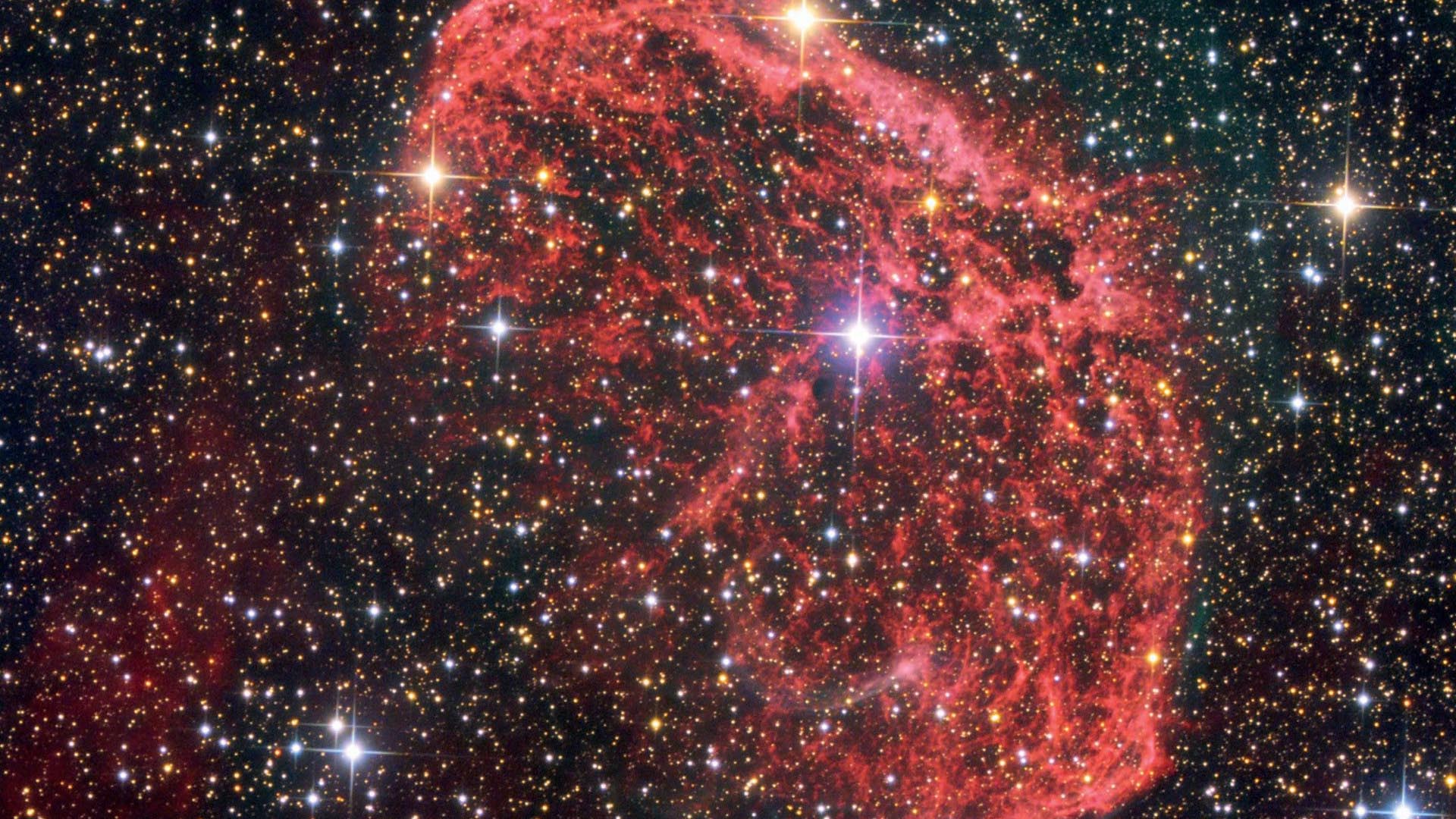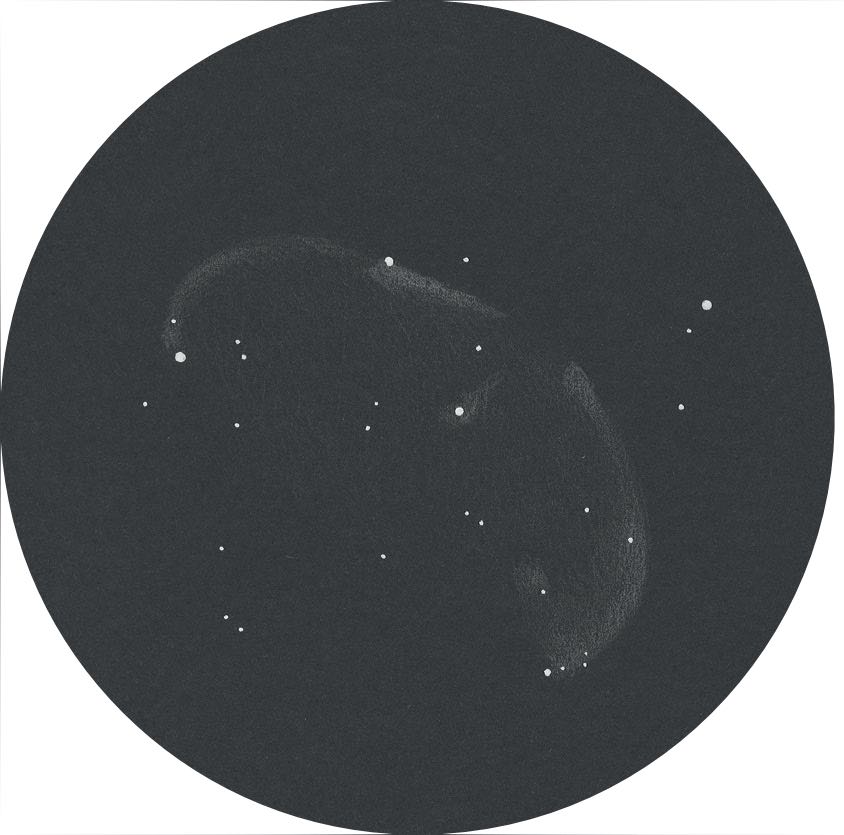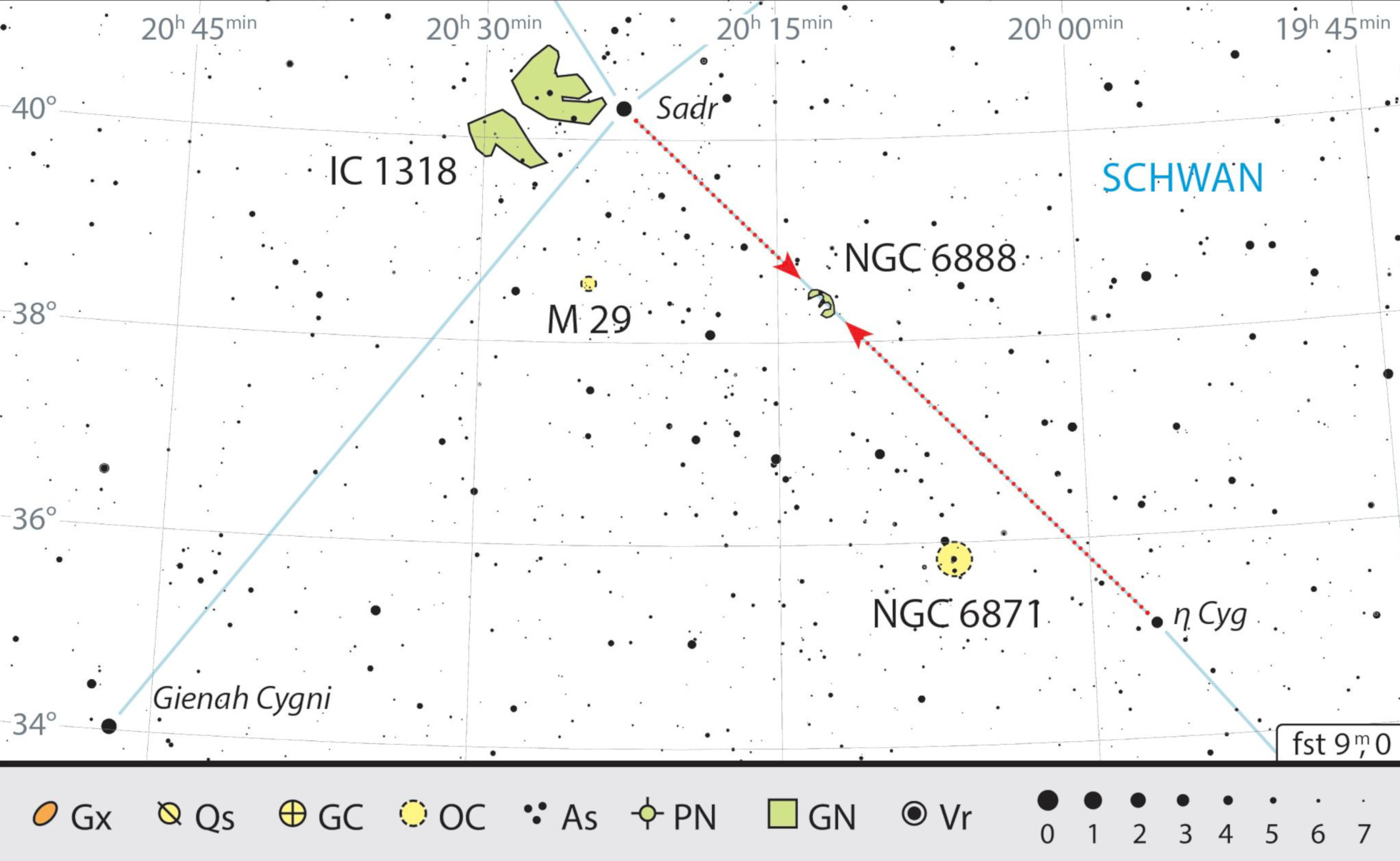The crescent in Cygnus
In addition to the North America Nebula and the Veil Nebula, Cygnus is home to the exotic Crescent Nebula NGC 6888. You'll need an OIII filter.
 The fine filament structure of NGC 6888 is visible on long-exposure images. Jochen Borgert
The fine filament structure of NGC 6888 is visible on long-exposure images. Jochen BorgertThe constellation of Cygnus has a lot to offer to emission nebula observers: photographs of this region are dominated by the North America Nebula (NGC 7000) and the extensive Gamma Cygni Nebula (IC 1318). Not far from this we find NGC 6888, known as the Crescent Nebula. The object, which was discovered by Wilhelm Herschel in 1792, is a so-called Wolf-Rayet nebula. The nebula’s gas comes from the Wolf-Rayet star WR 136.
Massive Wolf-Rayet star
 Drawing of NGC 6888 from a slightly illuminated country sky with a 600-mm Newtonian. Daniel Spitzer
Drawing of NGC 6888 from a slightly illuminated country sky with a 600-mm Newtonian. Daniel SpitzerWolf-Rayet stars are massive stars at an advanced stage in their evolution that generate strong stellar winds at the end of their lives. In doing so, they eject a great deal of matter into their surroundings. We see this material as a nebula surrounding the star. With its high surface temperature of around 55,000°C, WR 136 emits energy-rich ultraviolet radiation that excites the gas in the nebula, thus making it glow.
In addition, another process is responsible for radiation emissions: the material ejected by the star meets the interstellar medium, forming a shock front in which gas is heated and ionised. Photographs of NGC 6888 reveal a filament-like structure, which originally caused the Crescent Nebula to be categorised as a supernova remnant. However, unlike the Crab Nebula, there was no pulsar in the centre. The approx. 18' × 13' nebula is around 4,500 light-years away and has an actual dimension of 25 × 16 light-years.
Crescent shape only visible with a filter
NGC 6888 can be successfully observed with small, fast telescopes (from about 4"). An 8" Dobsonian, on the other hand, is ideal because it combines sufficient light gathering capacity together with high resolution capability. As the Milky Way is crowded with stars, the object is best found by using an optical finder. Starting from γ Cyg, pan in the direction of η Cyg, stopping at exactly one third of the way.
If you have found NGC 6888, you should immediately attach a [OIII] filter. This not only increases the contrast with the background, but also suppresses the Milky Way’s stars. Besides, the characteristic and eponymous crescent shape can only be observed by using the [OIII] filter. In this way, you avoid mistaking star chains for structures in this complex object. The northern part of the crescent is the brightest part of this nebula. The object’s enormous range of brightness becomes visible on long-exposure photographs. It is therefore worth switching to averted vision from time to time, in order to be able to discern the fainter sections. A bright country sky can also be a problem for large telescopes, the light obscuring many details.
 The Crescent Nebula can be found at around a third of the way between Sadr (γ Cyg) and η Cyg. J. Scholten
The Crescent Nebula can be found at around a third of the way between Sadr (γ Cyg) and η Cyg. J. ScholtenAuthor: Daniel Spitzer / Licence: Oculum-Verlag GmbH
